How can the Rosa Parks teachers effectively implement the RTI components in each tier?
Page 6: Tier 2
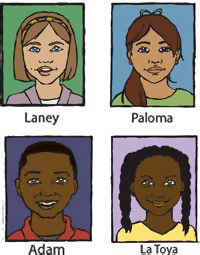
Tier 2 intervention typically lasts from 20 to 45 minutes, depending on the age and the instructional needs of the child.
The four students who did not respond adequately to the Tier 1 high-quality instruction provided by Mr. Brewster are Laney, Paloma, Adam, and LaToya. Therefore, they will begin receiving 30 minutes of targeted reading intervention (Tier 2), provided by Ms. Washington, the reading specialist at Rosa Parks, in addition to the 90 minutes of reading instruction (Tier 1) with Mr. Brewster. Ms. Washington will provide intervention to groups of three to five students (with no group larger than five). Consequently, Mr. Brewster and the other second-grade teachers have arranged their schedules so that they will send their students to Ms. Washington’s room at different times throughout the day. Mr. Brewster’s students have been assigned the period from 12:15 pm to 12:45 pm. Though Mr. Brewster realizes that his students will miss some of his instruction in order to receive Tier 2 intervention, he does not want these students to miss entire instructional periods and, thus, has arranged his schedule to minimize the amount of instruction that they will miss in science and social studies.
| MR. BREWSTER | ||
| 12:00 – 12:30 | Science (M, W, F) Social Studies (T, Th) |
|
| 12:30 – 1:00 | Social Studies (M, W, F) Science (T, Th) |
|
12:15 – 12:45 Tier 2 intervention
Providing 30 Additional Minutes of High-Quality Instruction
 Ms. Washington will offer targeted intervention for 10 weeks (one round) using a supplemental program that is based on research-validated instruction. As with Tier 1 instruction, the Tier 2 intervention will incorporate the five core reading components: phonemic awareness, phonics and word study, fluency, vocabulary, and reading comprehension. In addition to covering the same core reading components, Tier 2 intervention will provide additional support by:
Ms. Washington will offer targeted intervention for 10 weeks (one round) using a supplemental program that is based on research-validated instruction. As with Tier 1 instruction, the Tier 2 intervention will incorporate the five core reading components: phonemic awareness, phonics and word study, fluency, vocabulary, and reading comprehension. In addition to covering the same core reading components, Tier 2 intervention will provide additional support by:
- Remediating skill deficits
- Preteaching and reviewing skills for Tier 1 lessons
- Providing multiple opportunities to practice
- Providing immediate corrective feedback
For Your Information
Tier 2 intervention can be implemented using a supplemental program that complements the core reading program used in the general education classroom for Tier 1 instruction. Alternatively, the school may implement any effective research-based program for targeted instruction. In either case, the Tier 2 intervention provider can evaluate whether the selected program is adequately addressing the five core reading components.
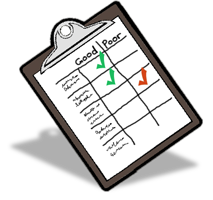 Before the beginning of the school year, Ms. Washington evaluated the supplemental program and, finding that the program was weak in vocabulary, she gathered additional materials to teach this skill. As she instructs her students, Ms. Washington will keep in mind that not all lessons in the supplemental guide may be beneficial for her students.
Before the beginning of the school year, Ms. Washington evaluated the supplemental program and, finding that the program was weak in vocabulary, she gathered additional materials to teach this skill. As she instructs her students, Ms. Washington will keep in mind that not all lessons in the supplemental guide may be beneficial for her students.
 It is important to remember that the Tier 2 provider must take care always to match the intervention to the students’ instructional needs and to align the lessons with Tier 1 instruction.
It is important to remember that the Tier 2 provider must take care always to match the intervention to the students’ instructional needs and to align the lessons with Tier 1 instruction.
Following is an example of one of Ms. Washington’s weekly lesson plans, illustrating how she addresses the core reading components and progress monitoring during the targeted intervention.
|
Teacher: Ms. Washington Date: Tuesday, Dec. 7 Group: Laney, LaToya, Adam, & Paloma |
|
|
Phonemic Awareness 2 minutes |
|
|
Phonics and Word Study 10 minutes |
|
|
Vocabulary 0 minutes |
(Note: No vocab. activities on T/Th) |
|
Fluency 10 minutes |
Once the story is finished, have student partners re-read the story to each other, alternating sentences (alternating paragraphs for students with better fluency) and using error-correction procedures. |
|
Comprehension 8 minutes |
(Note: Comprehension activities occur in conjunction with phonics and word-study activities for a combined total of 18 minutes.) At indicated sections in “The Goo Room” story, ask/discuss comprehension questions:
|
| Progress Monitoring | (Note: Administer a progress monitoring probe to 1 student each day.) |
| Monday | Tuesday | Wednesday | Thursday | Friday | |
| Phonemic Awareness | 2 min. | 2 min. | 2 min. | 2 min. | 2 min. |
| Phonics and Word Study | 12 min. | 10 min. | 15 min. | 10 min. | 10 min. |
| Vocabulary | 10 min. | 8 min. | 10 min. | ||
| Fluency | 6 min. | 10 min. | 5 min. | 9 min. | 8 min. |
| Comprehension | 8 min. | 9 min. | |||
| Progress Monitoring | 1 student | 1 student | 1 student | 1 student |
From Implementing the 3-Tier Reading Model: Participant Guide – Handouts (2nd ed.) (Handout 29), by Vaughn Gross Center for Reading and Language Arts at The University of Texas System/Texas Education Agency. Copyright 2005 by UT System/TEA. Adapted with permission.
As is outlined in the table above, Ms. Washington devotes a few minutes of every day to phonemic awareness, even though this is not usually a focus in second-grade curricula. She usually addresses it at the beginning of class with an activity, such as a song. Ms. Washington realizes that it is important to provide opportunities for those students who are struggling to practice and review phonemic awareness skills. However, she also understands that students need to be taught the other core reading components, whether or not they have mastered phonemic awareness, in order for their reading skills to progress.
| Reading Component | Kindergarten | First Grade | Second Grade | Third Grade |
| Phonemic Awareness | ||||
| Phonics and Word Study | ||||
| Fluency | ||||
| Vocabulary | ||||
| Reading Comprehension |
National Reading Panel, 2000; Texas Essential Knowledge and Skills (TEKS)
 Instead of providing instruction on each individual component for only five minutes per day, Ms. Washington feels that she can more effectively address the five core components by devoting more time each day to just a few of them. Therefore, as illustrated in the table above, she does not always address each component in her daily lesson, but rather makes certain that she covers all of the skills during the week. Ms. Washington may later change the amount of time she devotes each week to the individual core reading components, based on the students’ instructional needs.
Instead of providing instruction on each individual component for only five minutes per day, Ms. Washington feels that she can more effectively address the five core components by devoting more time each day to just a few of them. Therefore, as illustrated in the table above, she does not always address each component in her daily lesson, but rather makes certain that she covers all of the skills during the week. Ms. Washington may later change the amount of time she devotes each week to the individual core reading components, based on the students’ instructional needs.
Though Rosa Parks has the resources to hire a full-time reading specialist to serve as the Tier 2 provider, in some schools, such as Wiseman Elementary School, the general education teacher provides the Tier 2 intervention.
 Though Rosa Parks Elementary has a reading specialist who provides Tier 2 intervention, Wiseman Elementary—located in a nearby school district—does not have the resources to hire another staff member to provide these services. Instead, Tier 2 intervention is provided in the general education classroom by the general education teacher. Regardless of who delivers Tier 2 intervention, extensive training is required for effective implementation.
Though Rosa Parks Elementary has a reading specialist who provides Tier 2 intervention, Wiseman Elementary—located in a nearby school district—does not have the resources to hire another staff member to provide these services. Instead, Tier 2 intervention is provided in the general education classroom by the general education teacher. Regardless of who delivers Tier 2 intervention, extensive training is required for effective implementation.
Ms. Svoboda is a second-grade teacher at Wiseman Elementary A close look at her daily schedule (below) will illustrate how she provides the additional 30 minutes of reading intervention (Tier 2) to those students who are struggling, while she also ensures that the other students are engaged in constructive academic activities. Ms. Svoboda knows that No Child Left Behind (NCLB) requires a minimum of 90 minutes of reading instruction each day, but she feels that all of her students would benefit from additional reading opportunities. For this reason, she decides to have a 30-minute reading activity in the afternoon. Ms. Svoboda has a reading area in her classroom where the students can gather their reading materials. The area consists of a bookcase containing books that cover a variety of ability levels and areas of interest, a place to curl up and read, and an assortment of reading activities.
While most of the students in the classroom are reading independently, Ms. Svoboda provides the Tier 2 intervention to the students who need the additional support.
| Ms. Svoboda’s Schedule | |
| 8:00–8:45 | Language Arts/ Spelling |
| 8:45–9:30 | Math |
| 9:30–10:15 | P.E., Music, Art |
| 10:15–11:00 | Social Studies |
| 11:00–11:30 | Lunch |
| 11:30–1:00 | Reading (90 minutes Tier 1 instruction) |
| 1:00–1:15 | Recess |
| 1:15–2:00 | Science |
| 2:00–2:30 | Independent Reading (or 30 minutes Tier 2 intervention) |
| 2:30–3:00 | Library, Computer, Spanish |
Progress Monitoring
One round of Tier 2 intervention usually lasts 10-12 weeks.
During the course of the 10 weeks of Tier 2 intervention, Ms. Washington collects progress monitoring data on Laney, Paloma, Adam, and LaToya once per week. She administers a progress monitoring probe to one of the four students each day. Consequently, Mr. Brewster no longer collects progress monitoring data on these students during Tier 1 instruction. Instead, he collaborates with Ms. Washington to keep abreast of his students’ progress.
Making Tier Decisions
When evaluating progress to determine a tier decision, teachers need to examine students’ progress monitoring data for the predetermined monitoring period in Tier 2 (a recommended minimum of 10 weeks). Teachers will examine both performance levels and rates of growth and will decide, based on the following guidelines, whether students are making adequate progress:
- Students are making adequate progress if their scores are at or above the established criterion for either performance level OR rate of growth.
- Students are not making adequate progress if their scores fall below the criteria for both performance level AND rate of growth.
The table below recaps this decision process.
| Performance Level | Rate of Growth | Outcome | |
| Meets Criteria |
Yes | Yes | Making adequate progress |
| Yes | No | Making adequate progress | |
| No | Yes | Making adequate progress | |
| No | No | Not making adequate progress; needs more intensive services |
Keep in Mind
To calculate a student’s performance level, compute the average of his or her last three probes.
- If a student’s average score on the last three probes is equal to or greater than the benchmark, the student is responding adequately to instruction.
- On the other hand, if a student’s score is less than the specified benchmark, more intensive instruction, like that provided in Tier 2, is warranted.
 Ms. Washington and Mr. Brewster meet at the end of the 10-week period of Tier 2 instruction to examine the students’ progress monitoring data and to evaluate their progress. Because it is now the middle of the school year, the mid-year criteria for the second-grade PRF are used to evaluate the students’ reading performance. In this example, the mid-year criteria are 35 words read correctly in one minute and a slope of 1. The table below displays each student’s data and tier placement decision.
Ms. Washington and Mr. Brewster meet at the end of the 10-week period of Tier 2 instruction to examine the students’ progress monitoring data and to evaluate their progress. Because it is now the middle of the school year, the mid-year criteria for the second-grade PRF are used to evaluate the students’ reading performance. In this example, the mid-year criteria are 35 words read correctly in one minute and a slope of 1. The table below displays each student’s data and tier placement decision.
If you would like to practice making tier decisions for each student in the table below, click here for a slope calculator. (The PRF criteria: benchmark ≥ 35; slope ≥ 1.)
| Student | Progress Monitoring Data | Tier 2 Placement Decision |
 |
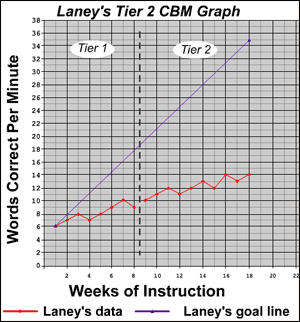
This is a line plot graph of Laney’s Tier 2 CBM data. The x-axis is labeled “Weeks of Instruction.” Weeks 0 through 22 are shown, with every two weeks labeled on the axis. There is a dividing, black-dashed line after week 8 to divide Tier 1 from Tier 2 instruction. The y-axis is labeled “Words Correct Per Minute.” 0 to 38 correct words per minute are shown, with every two words correct per minute labeled on the axis. There are two line plot graphs over Tier 1 and 2 instruction. The red graph shows Laney’s data and the purple graph shows Laney’s goal line. These graph indications are shown in the key underneath the graph. Laney’s goal line begins at six words correct per minute and stretches to 35 words correct per minute by Week 18. Laney’s Tier 1 data has eight plotted points at weeks 1 through 8. The points per week are as follows: 6, 7, 8, 7, 8, 9, 10, and 9 words correct per minute. Laney’s Tier 2 data has 10 plotted points, beginning at week 9 and ending at week 18. The points per week are as follows: 10, 11, 12, 11, 12, 13, 12, 14, 13, and 14. Laney’s performance level = 14 |
|
 |
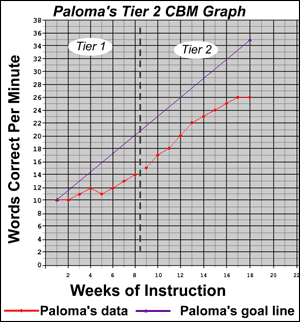
This is a line plot graph of Paloma’s Tier 2 CBM data. The x-axis is labeled “Weeks of Instruction.” Weeks 0 through 22 are shown, with every two weeks labeled on the axis. There is a dividing, black-dashed line after week 8 to divide Tier 1 from Tier 2 instruction. The y-axis is labeled “Words Correct Per Minute.” 0 to 38 correct words per minute are shown, with every two words correct per minute labeled on the axis. There are two line plot graphs over Tier 1 and 2 instruction. The red graph shows Paloma’s data and the purple graph shows Paloma’s goal line. These graph indications are shown in the key underneath the graph. Paloma’s goal line begins at 10 words correct per minute and stretches to 35 words correct per minute by Week 18. Paloma’s Tier 1 data has eight plotted points at weeks 1 through 8. The points per week are as follows: 10, 10, 11, 12, 11, 12, 13, and 14 words correct per minute. Paloma’s Tier 2 data has 10 plotted points, beginning at week 9 and ending at week 18. The points per week are as follows: 15, 17, 18, 20, 22, 23, 24, 25, 26, and 26. Paloma’s performance level = 26 |
x
round of intervention A set period of time, determined by the school or district, during which an intervention is implemented. |
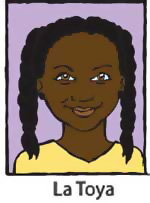 |
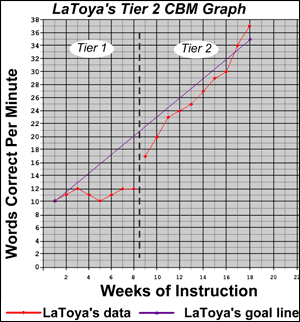
This is a line plot graph of LaToya’s Tier 2 CBM data. The x-axis is labeled “Weeks of Instruction.” Weeks 0 through 22 are shown, with every two weeks labeled on the axis. There is a dividing, black-dashed line after week 8 to divide Tier 1 from Tier 2 instruction. The y-axis is labeled “Words Correct Per Minute.” 0 to 38 correct words per minute are shown, with every two words correct per minute labeled on the axis. There are two line plot graphs over Tier 1 and 2 instruction. The red graph shows LaToya’s data and the purple graph shows LaToya’s goal line. These graph indications are shown in the key underneath the graph. LaToya’s goal line begins at 10 words correct per minute and stretches to 35 words correct per minute by Week 18. LaToya’s Tier 1 data has eight plotted points at weeks 1 through 8. The points per week are as follows: 10, 11, 12, 11, 10, 11, 12, and 12 words correct per minute. LaToya’s Tier 2 data has 10 plotted points, beginning at week 9 and ending at week 18. The points per week are as follows: 17, 20, 23, 24, 25, 27, 29, 30, 34, and 37. LaToya’s performance level = 34 |
|
Activity
The final struggling reader in Tier 2 is Adam. Help Mr. Brewster and Ms. Washington to evaluate his data. Using the performance-level and rate-of-growth criteria, make a placement decision for Adam. Click on Adam’s picture to begin this activity.
- Enter Adam’s current performance level
- Enter Adam’s slope
- Is Adam making adequate progress in Tier 2 (click “Yes” or “No” )?
- What is your tier decision for Adam? (choose one of the following answers)
LaToya and Adam have met the criteria for rate of growth and performance level to discontinue Tier 2 intervention. They will receive Tier 1 instruction only with Mr. Brewster, and he will continue to monitor their progress. Paloma’s reading skills have improved with Tier 2 support; however, she has not yet reached the grade-level benchmark. She will receive another round of Tier 2 intervention until she meets the predetermined criteria. Laney still is not making adequate progress and will be referred for Tier 3 intervention.
benchmark
An indicator used to identify the expected understandings and skills needed for content standards by grade level; benchmarks are tracked according to predetermined time intervals (e.g., a mid-year benchmark).
round of intervention
A set period of time, determined by the school or district, during which an intervention is implemented.
